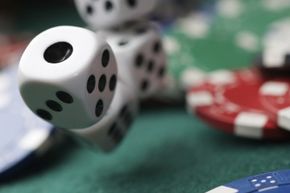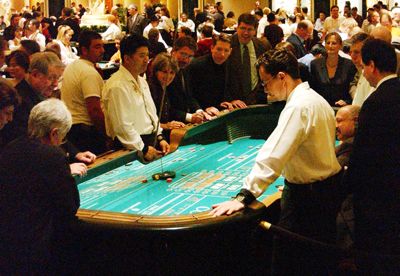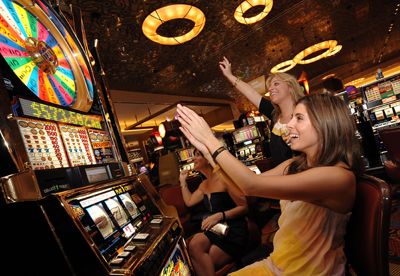When you roll a perfect six-sided die, you have a one in six — 16.667 percent — chance of rolling any given number. Change the die just slightly, however, and you can significantly increase your odds of having the die land the way you want it to, or make a certain number more likely to land facing up on any given roll. With so much money on the line at many of the world's top casinos, it's no surprise that people are willing to try all kinds of methods to turn the odds in their favor at the dice table.
For example, drilling out a small space behind the dots and filling it with metal results in loaded dice —dice that are heavier on one side — which means that the unaltered side is more likely to land face up. When you remove a bit of material from one or more sides of a die without adding any extra weight, you create what's known as a floater, though the same principle applies — the lighter side is more likely to land face up. Altering the dimensions of the dice so that two sides are slightly larger than the other four gives you what cheaters refer to as flats, where the dice is more inclined to roll onto one of those two larger sides.
Advertisement
While all gaming boards set their own standards for dice inspection and testing, many share a number of similarities with standards published by the New Jersey Casino Control Commission, which monitors and regulates gambling in Atlantic City. These standards require dice to be kept under lock and key until the tables open for business. At that time, the pit boss hands the dice off to the boxperson, who must perform a range of tests.
He begins with a visual inspection, checking to see that all opposing sides equal seven, and that each die is equipped with the casino's name, logo and a serial number. If these basics are in place, he takes a closer look to make sure there are no visible defects, including nicks, burrs, extra dots or marks that could be used for cheating. A trained boxperson can even tell from the depth of the dots if anything is amiss.
If the dice pass the visual inspection, the boxperson has a selection of tools at hand to complete the testing process. He uses an electronic micrometer to measure each side of the die and determine if it is sized correctly — no flats. He inserts the die into a balancing caliper, which ensures all sides are weighted equally — no floaters or loaded dice. A steel set square allows him to check that all corners and edges are square, while a simple magnet will reveal any added metal.
Advertisement



